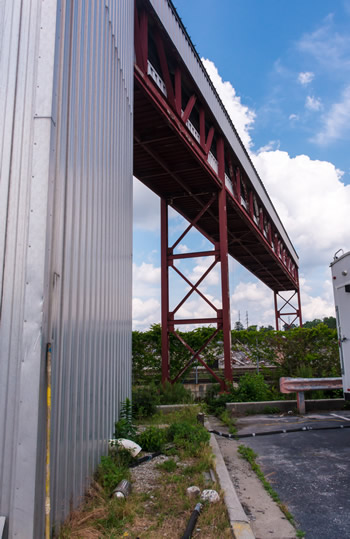
Even as “the new GM” rolls on with a recently announced $5.4 billion in US plant improvements over the next three years, the plants “old GM” hived off during bankruptcy continue to seek new lives. One of them — Doraville Assembly in Greater Atlanta — is taking on a new identity that aims to transcend a mere project, and transform an entire community.
In April, a multi-district master plan for the site, developed by New York–based design and architecture firm Perkins Eastman, was formally adopted, following unanimous approval by the Doraville City Council in March. The newly named “Assembly, Doraville, USA,” northeast of Atlanta proper, next door to a MARTA rail transit station and overlooking I-285 near its famous “Spaghetti Junction” with I-85, comprises 165 acres that will eventually accommodate up to 10 million sq. ft. of mixed-use development over the next decade.
“Envisioned as a transit-oriented development spread across multiple distinct districts, Perkins Eastman’s plan brings together housing, office, entertainment, retail, and public green space, all while emphasizing walkability, sustainability, and placemaking,” said a release from the architects. “Master plan approval follows the creation of the Livable Community Code, a new zoning distribution that allows for mixed-use development within a flexible marketplace.” The area is envisioned as a sustainable “city within a city” that will set a new standard for efficient infrastructure in the Atlanta metro area, from water conservation and green space to 10-gigabit Internet service from Hotwire.
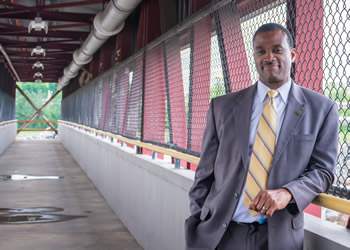
Assembly is in a designated Opportunity Zone — businesses located on site will receive a $3,500-per-year tax credit for five years for each new job created. Moreover, the brownfield status of the site affords more tax credit advantages.
In an interview this week from a gate at LaGuardia, where he was catching a flight to Atlanta, Stan Eckstut, principal and lead designer for the Assembly master plan, said even from a windshield tour of the site during the selection process his firm won, his team saw intriguing possibilities for an area encompassing much more than the GM site. That vision is an ideal fit with the multi-discipline composition of his firm, allowing earlier involvement than most architecture firms.
“Our approach is to create urban places, not projects,” said Eckstut, who just finalized the designs for the final two buildings at the soon-to-be-complete Battery Park City redevelopment in the Big Apple. “We feel like we’re building a town.”
First Stop: The Yards
GM could legitimately claim to having built the original town of Doraville, thanks to its choice to construct the plant on a former dairy farm beginning in the 1940s. Opened as part of the Buick-Oldsmobile-Pontiac Assembly Division in November 1945, the Doraville plant’s cost, including land, totaled $9 million. By 1976, 275,000 cars were produced there, and the plant had a payroll of $87 million for 4,700 employees — equal to about half the population of the City of Doraville, whose population totals around 10,600 today.
The plant was closed in September 2008 as part of GM’s corporate downsizing. After numerous concepts were floated, withdrawn, and floated again — including stadium possibilities for Atlanta’s football and baseball teams — IMS, a JV between The Integral Group, Macauley+Schmit and its Houston-based capital partner CAMS, announced in September 2014 it had closed on the purchase of the site, with financing provided by Ardent Capital.
Negotiations with GM took nearly two-and-a-half years, a length of time one observer describes as “painful, with two steps forward, two steps back, and sometimes one step forward, two steps back.”
GM spokesperson Bill Grotz confirms the time frame of the negotiations. While reluctant to address challenges during the process, he says, “In the end, it worked out great. It’s a good solution for all parties, and we’re glad the redevelopment is underway.”
Originally named for Dora Jack, the daughter of an officer in the railroad department, Doraville is part of a Greater Atlanta area that continues to grow, and continues to grow its population of high-tech and creative industries firms and talent base. One indication comes from GM itself, which didn’t completely abandon the city: There are currently 26 job openings at GM’s Atlanta office in the areas of data management, network security, systems analysis and software development.
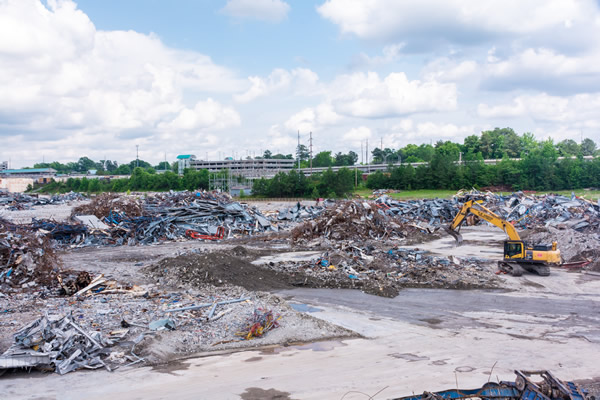
The high-tech, creative industries and maker space trend is central to the assembly of Assembly too. In April, Eric Pinckney, vice president of The Integral Group, Real Estate Division, announced the firm had teamed with Capstone South Properties to begin development on Georgia’s newest film and television production studio, “Third Rail Studios,” at the Assembly site. The first phase of construction will be an adaptive reuse of an existing 130,000-sq.-ft. building to accommodate sound stages, production support, mill shops, related vendor spaces and administrative offices. At full buildout, the media complex will be a 270,000-sq.-ft. facility, becoming the first film studio of its magnitude north of Atlanta and inside the I-285 Perimeter.
“The creative energy of the studio environment calls out to industries in search of like-minded neighbors,” said Pinckney in the studio announcement. “This will be unlike anything we’ve seen in Georgia,” said Michael Hahn, president of Capstone South Properties.
A visit to the site this week in the company of Pinckney and Hahn included a sighting of the three rail spurs that give the studio its name, extending under a bridge structure that has been preserved to anchor the first district of the master-planned development to be pursued, called “The Yards.” It will include dining, entertainment, parks, art, retail, makers and other businesses. After demolition is complete, construction will begin. “We want to start in August, and the first opening of something should be the first quarter 2016,” says Pinckney. “The balance of The Yards would come open in 2016.”
As a direct result of the 2005 Georgia Entertainment Industry Investment Act, in 2014 production companies spent close to $1.4 billion in Georgia, creating a total economic impact of $5.1 billion for the state.
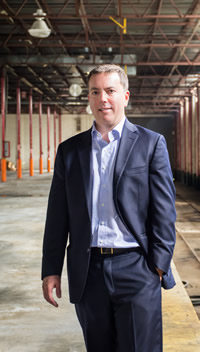
“During the recession, there were many property owners who were buoyed by the shorter term rentals provided by the film industry, but now that Georgia’s economy is strong, many of our ‘go to’ warehouse properties have been sold or are being occupied by long-term tenants,” said Lee Thomas, Deputy Commissioner of the Georgia Film, Music and Digital Entertainment division, at the April announcement. Recent studio projects have come from Pinewood Studios, EUE/Screen Gems, Eagle Rock, Triple Horse and Tyler Perry Studios, which is putting its property on the market this month as it stands on the brink of a deal with the City of Atlanta to establish an entirely new studio complex covering 330 acres at Fort McPherson. The Atlanta City Council in April approved a deal that will allow Atlanta Mayor Kasim Reed to extend to Perry’s organization a $13-million line of credit for brownfield cleanup on that property.
Hahn, who led the redevelopment of the former Western Electric/Bell Labs facility in nearby Gwinnett County into a 110-acre mixed-used project, just returned from a trip to California, where he received more than one assurance that production space would be used.
“As big of a spend as we had last year, it will be even more this year,” Hahn says, citing anecdotal evidence and his own conversations with major production companies out West. “They all say, ‘We need more facilities in Georgia. It’s our number one choice as a place to shoot, and the only reason we’re not there is there are not enough facilities.’ One told me, ‘You need to build your infrastructure. We’ll go to Georgia or we’ll have to go to Australia.’
“Los Angeles and Calfornia expanded their tax credit, but even with that, I’ve been told it’s still more economically advantageous to shoot in Georgia than California,” says Hahn. “That will only lead to more demand in Georgia going forward. Right now in Georgia there are more film studios being built than anywhere in the world. It’s a historic time.”
The proliferation of delivery media for content means the demand for soundstages has increased. Asked if the studio’s activity might overlap with Atlanta’s burgeoning videogame production community, Hahn says there has been some talk among stakeholders about finding videogame production tenants. “The spend on some of the videogames is greater than for films,” he says.
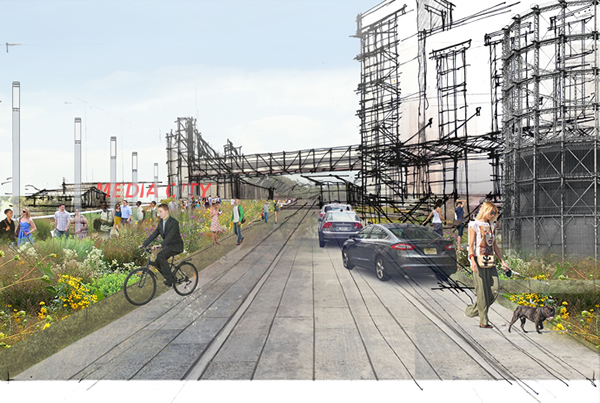
No matter what the creatives are working on, Third Rail will have the advantage of food, beverage, retail and entertainment options close at hand, unlike other, more isolated studio complexes in the region. But with the lack of isolation comes a decided lack of quiet, especially with flight paths in and out of DeKalb-Peachtree Airport, one of the busiest regional airports in the country. Hahn says the question keeps coming up, and he’s glad to provide an answer.
“We’ve worked with three of the most prominent acoustic experts in the country to inform our construction process,” he says, noting that one of them worked on a recording studio (which has an even higher degree of sound attenuation requirement) in the flight path of LaGuardia. “Our studio will be just as quiet inside as a studio not in a flight path,” he says, fortified by 12 inches of concrete in the walls and seven inches in the roof. Sound measurement equipment has been deployed twice to calculate the materials’ sound transmission class (STC) ratings, “and the materials we’re using will get us to a 60 STC, equivalent to any other studio in the country,” says Hahn.
Key Word: Partnership
Best of all, however, the studio will be in the midst of what Pinckney calls “a collaborative area.” That word is the calling card of the project thus far. It was given concrete form at a meeting in the project’s trailer on the edge of the site this week, as a who’s who of economic development leaders, elected officials and other project stakeholders showed up to eat Chick-fil-A, sip iced tea and gobble up the latest project information, and to express their support for the plan.
Norfolk Southern, for instance, has 13 rails running alongside the site that were originally put in to support GM. Pinckney says he’s found the railroad’s real estate department “very receptive and cooperative” thus far, in part because of the potential for reuse of some of those tracks from future tenants. Pinckney says Georgia Department of Transportation and MARTA officials have been equally cooperative, with the DOT diplomatically suggesting, for instance, that a planned roundabout for one of the future road intersections was not necessary, and could be an intersection improvement instead.
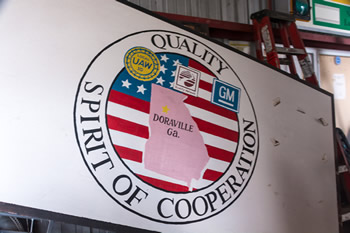
“We listened to them, and came up with something more readily implementable,” says Pinckney. “It’s that kind of cooperation and give-and-take from all the agencies that will make this successful.”
Also central to the plan is … not having too much of a plan. Instead of overlays prescribing land use, allowing the market to drive end uses will ultimately drive the sort of organic complementarity the designers envision. For creatives with a bit of grunge and grit in their aesthetic, there’s nothing worse than fake authenticity.
“It’s not dictated to be exactly this or that,” explains Stan Eckstut. “Every part of the plan is market-driven. We just want to be sure we have enough landscape and have public events space. The building uses will be more up to the marketplace. That’s a general trend in all of our work.”
“If you create great public space, the private space will be that much better,” says Pinckney, with 25 years of experience to back him up. “A big part of my job is to work with those partners to make that public space come to pass, then attract the kind of private partners that make good jobs.”
Rising Profile
There are still steps to be taken. The process of forming a tax allocation district (TAD) has begun with the formation by the City of Doraville of an urban redevelopment authority and the approval of a TAD map. Now comes the education and information sharing process that project leaders hope will lead to approval of that TAD by the city council by the end of this year.
Part of the plan calls for a new civic center in Doraville, right across from the city’s first-ever high school. Pinckney says there’s a natural connection between the STEAM skills Integral likes to encourage in its communities (science, technology, engineering, arts and mathematics) and the types of economic activity it’s trying to encourage at Assembly. But there’s a more practical consideration that should prove attractive too:
“There’s no place in DeKalb County that can seat 2,000 people for a graduation,” he says, noting text messages he’s been receiving from people attending school graduations far from where the schools actually sit. As he puts it, when such ceremonies are in a church, “you offend somebody, and when you leave the county, you offend everybody. We hope to be a center for DeKalb, not just for graduations, but for major civic events.
“Any time you have taxes in your name, you have a public education process,” says Pinckney of forthcoming talks and public meetings involving the city, DeKalb County and the school board, “but we’re optimistic. This site will have a huge halo effect. That’s what you look for in a TAD — not just the amount of taxes you derive on your footprint, but activity that occurs outside that footprint. We’re confident.”
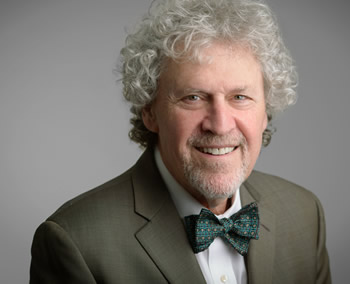
It’s already happening, to some extent, he says, as investment activity along Buford Highway has picked up decidedly over the past six months. Inquiries about Assembly are being catalogued and databased, Pinckney says, and are coming not only from office, retail and residential firms, but from such various entertainment concepts as ski slopes and Ferris wheels.
“There’s been a lot of residential interest,” he says, “but that is not our lead. Our lead is meant to be economic development. What Doraville Mayor Donna Pittman told us straight away was, ‘What GM meant the most is a lot of jobs.'” City leaders want to bring back the tax digest first.
“We know if we do it right, the retail and housing will follow,” says Pinckney.
All agree that so far it’s been an unprecedented display of unity for a plan that promises to newly unify a community. Public-private partnership (PPP) is part of Integral’s DNA, but seeing it in real life on the scale needed to support this major effort is something else again. Pinckney, a Georgia Tech grad with 25 years of development experience himself, defers to the 35 years of experience of Integral CEO Egbert Perry, who told him he’d never seen so many entities in alignment for a project, “all in the same room, singing the same tune.”
Best of all, people from all directions will be able to converge at the site from multiple modes of transportation and multiple communities. Whether they’re GenXers from the city center or executives with families in Johns Creek and Alpharetta, the maker and job creators alike will be drawn to the campus setting.
Considered in that context, says Pinckney, the project’s status rises to statewide significance. While he is focused on the concentric circles involving Atlanta and its perimeter, state leaders have put it on par with the Port of Savannah and Hartsfield-Jackson International Airport in terms of its importance as a multimodal node and economic generator.
It could become even more so if MARTA, after decades stuck in its own rail transit footprint, expands further into suburban Atlanta, where recent polls show a positive turnaround in public support. Asked how such expansion would complement Assembly, Eckstut says, “The more people using transit, with more stops, the more business you have on MARTA, and that would promote more development around each station. We’re not relying on it, but as the transit system grows, the more development will prosper. There will be more choices for people, as opposed to just living somewhere. I think everybody is lifted by the expansion of system ridership.
“Extending [MARTA] into Gwinnett we think is inevitable, and we think important,” Pinckney says, “not just to get downtown or to the airport, but so they can get here.”
This is the first installment in a series documenting the Assembly project’s progress and accompanying transformation of Doraville, Ga.

